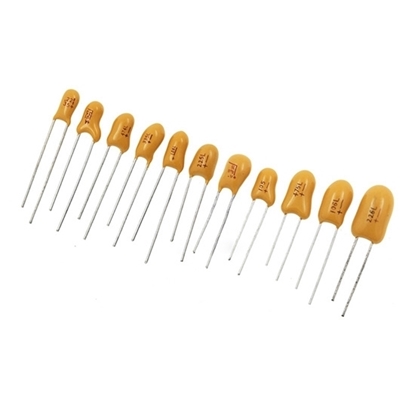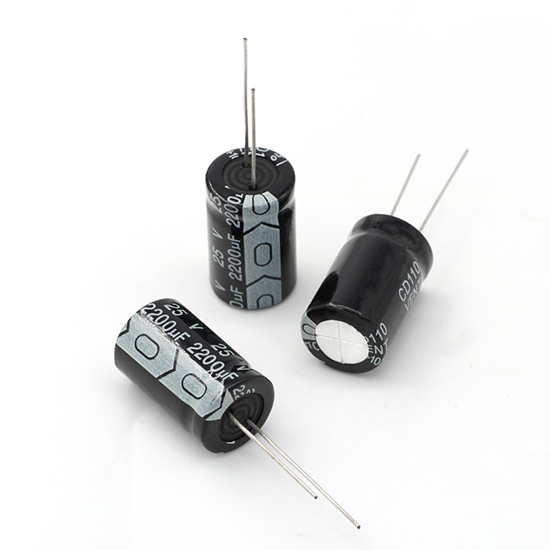What is the Difference between Tantalum and Electrolytic Capacitor?
Nowadays, with the development of economy and society and the improvement of science and technology level, electrolytic capacitors and tantalum capacitors have become more and more popular in the daily life of ordinary people, and they are inside the lamps. But at the same time, many people do not understand the difference between them, and even confuse them. So, let's take a look at the difference between tantalum capacitors and electrolytic capacitors today.
What is Tantalum Capacitor?
Tantalum capacitors are products that are small in size and can achieve large capacitance among capacitors, and their performance is excellent. The general tantalum capacitors come in a variety of shapes and are made in small and chip components suitable for surface mounting. Tantalum capacitors are not only used in military communications, aerospace and other fields, but also widely used in industrial control, video equipment, communication instruments and other products.

What is Electrolytic Capacitor?
Electrolytic capacitor is a kind of capacitor, the metal foil is the positive electrode (aluminum or tantalum), the oxide film (aluminum oxide or tantalum pentoxide) close to the positive electrode is the dielectric, and the cathode is made of conductive material and electrolyte (the electrolyte can be liquid or tantalum pentoxide). Solid) and other materials together, because the electrolyte is the main part of the cathode, so the electrolytic capacitor is named. At the same time, the positive and negative electrolytic capacitors should not be wrongly connected.

What are the Differences Between Tantalum and Electrolytic Capacitor?
- Different medium
Tantalum capacitors use metal tantalum as the medium, and common electrolytic capacitors use electrolyte as the medium; common electrolytic capacitors are wound with aluminum-coated capacitor paper, which has almost no inductance, but limits the capacity.
There is no electrolyte inside the tantalum capacitor, which is more suitable for working at high temperature and has a unique self-healing performance, which ensures the advantages of long life and reliability.
Electrolytic capacitor is a kind of capacitor, the metal foil is the positive electrode (aluminum or tantalum), the oxide film (aluminum oxide or tantalum pentoxide) close to the positive electrode is the dielectric, and the cathode is made of conductive material and electrolyte (the electrolyte can be liquid or tantalum pentoxide). Solid) and other materials together, because the electrolyte is the main part of the cathode, so the electrolytic capacitor is named. - Different performance
Solid tantalum capacitors have excellent electrical properties, wide operating temperature range, various forms, and excellent volume efficiency.
Unique features of tantalum capacitors:
The working medium of tantalum capacitors is a very thin layer of tantalum pentoxide film formed on the surface of tantalum metal. This layer of oxide film dielectric is combined with one end of the standard capacitor to form a whole, and cannot exist alone.
It has a very high working electric field strength per unit volume, and has a large capacitance, that is, a very high specific capacity, which is especially suitable for miniaturization. - Different uses
Capacitors come in a variety of shapes and are made as small and chip components suitable for surface mounting. Tantalum capacitors can be used in military communications, aerospace and other fields, and tantalum capacitors are widely used in industrial control, video equipment, communication instruments and other products. - Disadvantages
Compared with electrolytic capacitors, tantalum capacitors have the above advantages, but tantalum capacitors also have disadvantages, such as smaller capacity, more expensive than aluminum capacitors, and weaker voltage and current capabilities.
Tantalum capacitors are used in large-capacity filtering places. For example, tantalum capacitors can be seen near the CPU socket. They are often used in conjunction with ceramic capacitors and electrolytic capacitors or are used in places where voltage and current are not large.
The above are the differences between tantalum capacitors and electrolytic capacitors. From the perspective of capacitor medium, capacitor performance, and capacitor use, tantalum capacitors have their own advantages and disadvantages.

